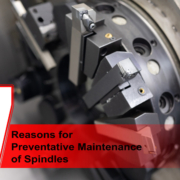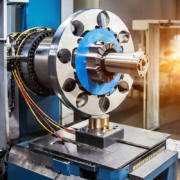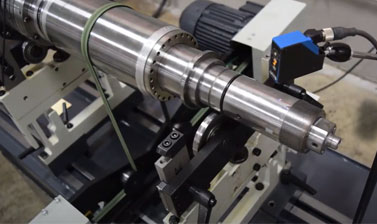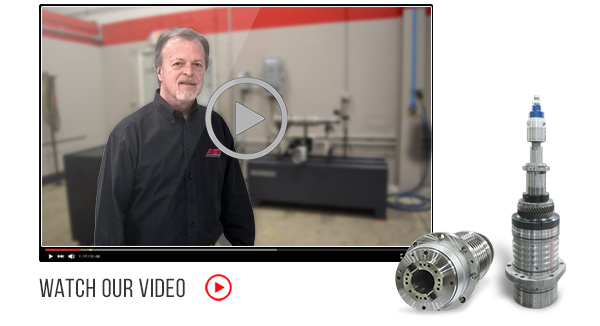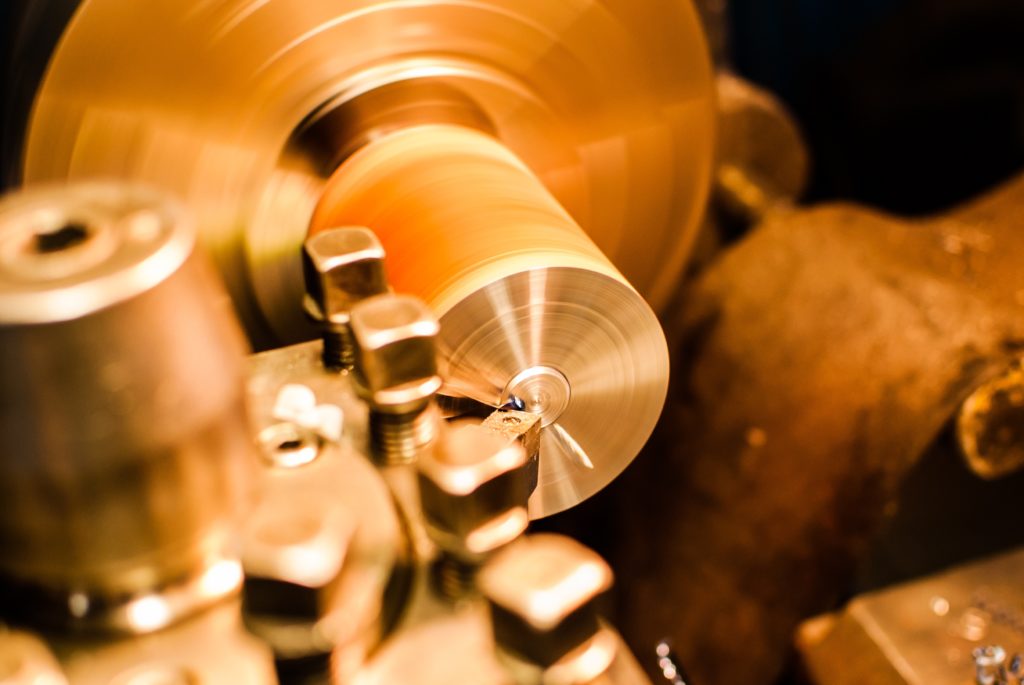Your machine’s tool spindle is the heart of productivity, and any unexpected downtime can have a significant impact on your operations. To ensure a smooth and uninterrupted workflow, it’s crucial to implement a proactive maintenance routine. We’ll delve into six essential tips to prevent your part productivity from coming to an abrupt halt due to a down tool spindle.
- Keep Lubricating Fluids in Check: One of the fundamental aspects of spindle maintenance is to keep lubricating fluids clean and at safe operating levels. Follow the recommended lubrication and/or air-intake filter replacement schedule to ensure optimal performance and longevity of your spindle.
- Monitor Spindle Runout: Checking spindle runout every six months and after any crash is crucial for identifying potential issues. Utilize a ground and calibrated spindle test bar to monitor spindle spring force with a drawbar pull force test. This proactive approach helps you catch problems early on, preventing further damage and ensuring precision in your machining processes.
- Closely Monitor Spindle Vibration: Spindle vibration can be an early indicator of problems. Do not ignore triggered alarms from built-in vibration sensing systems. Regularly monitor spindle vibration levels and take immediate action if any irregularities are detected. Timely replacement of worn spindle bearings is essential to maintain the stability and accuracy of your machining operations.
- Maintain Spindle-Bearing Lubrication: For large spindle headstocks that are not factory lubricated for life, it’s crucial to maintain spindle-bearing lubrication. These spindles often require regular lubrication with oil baths. Ensure you follow the manufacturer’s guidelines for lubrication intervals and use the recommended lubricants to keep your spindle bearings in optimal condition.
- Check Chiller Units for Spindle Coolant Systems: The efficiency of your spindle coolant system is integral to the overall health of your tool spindle. Regularly check and ensure that chiller units for spindle coolant systems are running properly. Proper cooling prevents overheating, which can lead to premature wear and damage to your spindle components.
- Re-Install Machine Covers: After routine maintenance or for any other reason, always re-install any machine covers that have been removed. This simple step is often overlooked but is crucial in preventing spindle contamination. Contaminants can lead to increased wear and tear and, ultimately, a decrease in the lifespan of your tool spindle.
By incorporating these six maintenance tips into your routine, you can significantly reduce the risk of unexpected downtime and keep your tool spindle running smoothly. A proactive approach to spindle maintenance not only ensures the longevity of your equipment but also contributes to the overall efficiency and productivity of your machining processes.
Advanced Spindle Technology Welcomes Eric Lautzenheiser as the New Regional Sales Manager
 [Cuyahoga Falls, OH — Nov. 6] Advanced Spindle Technology (AST) is pleased to announce the appointment of Eric Lautzenheiser as its new Midwest Regional Sales Manager. With a rich background in technical sales and a proven track record of leadership, Eric brings over 35 years of machinery and spindle experience to his role at AST.
[Cuyahoga Falls, OH — Nov. 6] Advanced Spindle Technology (AST) is pleased to announce the appointment of Eric Lautzenheiser as its new Midwest Regional Sales Manager. With a rich background in technical sales and a proven track record of leadership, Eric brings over 35 years of machinery and spindle experience to his role at AST.
Eric joins AST from SKF USA, Inc., where, among other roles, served as the Account Manager for Spindle Remanufacturing. In this position, he demonstrated exceptional skills in analytical thinking, technical sales, client relations, account planning, and sales presentations. Eric’s expertise played a crucial role in the success of the Spindle Remanufacturing division, contributing to its growth and client satisfaction.
His experience also extends to leading sales, delivery, application engineering, and customer service teams to maximize client value and experience.
“We are thrilled to welcome Eric Lautzenheiser to the Advanced Spindle Technology team,” said Bob Hodge, President at AST. “His extensive experience and proven success in technical sales make him a valuable addition to our organization. We look forward to leveraging his expertise as we continue to innovate and grow in the spindle technology industry.”
With Eric Lautzenheiser joining the team, Advanced Spindle Technology reaffirms its commitment to delivering cutting-edge solutions and unmatched service to its clients.
Hercka brings decades of business development for expanding spindle repair company
Advanced Spindle Technology announces the appointment of Martin Hercka to the position of Key Account Sales Manager. Mr. Hercka is a veteran in the industry with a specialized focus on spindle repair for the past 14 years. Hercka’s expertise comes from spearheading innovative onsite service activities for Fortune 500 organizations and leading teams to exceed corporate objectives.
As Advanced Spindle Technology’s newest employee, Hercka will lead efforts to expand into more diverse markets, grow topline revenue, and market existing products and services. He will be responsible for developing and executing strategies that will build Advanced Spindle Technology’s position as the premier spindle repair company.
Key Elements for Spindle Storage
Having a spare spindle on-hand for when your lathe, mill, or grinding machine goes down can save you both time and money. But, what happens if your spindle wasn’t cared for properly while being stored? Spindles can rust and corrode over time, and most likely, your warranty may have expired, OUCH!
When storing your spare spindles follow these best practices:
- Inspect your spindle before placing the spare spindle in storage.
- Store your spindle in a temperature and humidity controlled environment.
- Rotate your spindle 11 revolutions, every-other-week.
- Before utilizing your spindle in production, check for proper functionality.
By following these steps, you can ensure your spindle is being stored correctly.
Depending on your spindle manufacturer or spindle repair specialist, stored spindles may not be covered after the initial term limit from the purchase date. You’ll want to discuss warranty details with your spindle contact to review terms.
Spindle storage is a service that Advaned Spindle Technology offers to our customers. If you would like more information, visit our Spindle SPA page.
View this and all of Advanced Spindle Technology’s video on our YouTube Channel.
Beware of expedited spindle repairs
Published by: Cutting Tool Engineering
Written by: Bob Hodge
Every manufacturer looks for ways to add value for customers and derive value from suppliers. With machine tool spindle repair, end users can gain value by receiving a complete, comprehensive repair that is done quickly and economically.
Spindles are the heart and soul of machine tools and the most precise, heavily stressed components of a machine. Special care, therefore, must be taken to ensure that spindles are designed and built to provide the required accuracy and longevity. When a spindle degrades, a machine tool either does not hold specified tolerances or does not produce parts at all. In any case, it costs money.
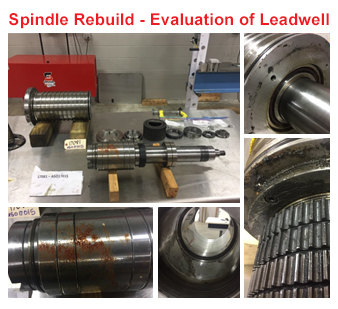 When a spindle goes down, it is natural to want a machine back up and running as soon as possible. Having a spindle down in the middle of a job with a tight delivery is not a good feeling. However, although you need a spindle repaired quickly, it must be repaired correctly. A fast but substandard repair is not much consolation if part tolerances do not hold or a spindle quickly fails again.
When a spindle goes down, it is natural to want a machine back up and running as soon as possible. Having a spindle down in the middle of a job with a tight delivery is not a good feeling. However, although you need a spindle repaired quickly, it must be repaired correctly. A fast but substandard repair is not much consolation if part tolerances do not hold or a spindle quickly fails again.
Trust, but Verify
So how do you know that a spindle will be repaired as quickly as possible without cutting corners or taking shortcuts regarding the quality and completeness of a repair? The answer is transparency. A spindle repair company should provide proper documentation so customers know they are deriving value from spindle repairs.
In most machine tool spindles, there are 250 to 300 individual components and assembly characteristics that impact performance and longevity. For a comprehensive repair, each of these must be checked and evaluated for suitability. Since many tolerance measurements are in microns, components should be absolutely clean and at the proper temperature to accurately inspect them. To accomplish this, a 24-hour turnaround for a proper spindle rebuild is hardly sufficient. It can take that long for individual components to reach the proper temperature for inspection. A basic expedited repair should take three days from receipt of a spindle to shipping it back to a customer.
All these significant characteristics should be documented clearly by a spindle repair company for a customer to see. Photos of spindle components that show conditions and damaged areas are important for the knowledge and understanding of a customer. The cause of spindle failure, including analysis, should be noted so spindle performance or longevity can be assessed for potential improvement. It is often possible to make changes to bearings or sealing systems to enhance spindle performance or durability.
Test and Measurement
After a spindle is reassembled, test bar runouts should be measured and documented. Drawbar pull forces should be set and documented, and any sensors or encoders used should be tested.
The final assembly performance characteristics should be documented during a complete runoff. Documentation should include the spindle’s steady-state operating temperatures, details of the bearings used in the repair, and running vibration and balance characteristics. The vibration spectra at each end of the spindle also provide valuable information, which can be used as the baseline for a predictive maintenance program.
If all this sounds like a lot, that is because it is. Proper documentation usually requires about 20 pages. However, that gives enough information so a customer can understand what a suitable spindle assessment and rebuild look like — specifically, what was wrong with a spindle and what was done to repair it. This level of transparency allows a customer to know that a comprehensive repair was performed and the cost was justified.
If you are accustomed to receiving a single page with an invoice for a spindle repair, evaluate whether you are getting the kind of value you expect and deserve from your spindle repair partner.
To read the article in Cutting Tool Engineering – visit here
At Advanced Spindle Technology, we are committed to providing a detailed report documenting the complete spindle repair process. In most machine tool spindles, there are from 250 to 300 individual components and assembly characteristics that impact performance and longevity. For a comprehensive repair, each of these must be checked and evaluated for suitability.
In this video, Bob Hodge, President of Advanced Spindle Technology, talks about the importance of our reporting.
If you’re interested in learning more about our reporting process, contact us.
While machining equipment has evolved a lot over the past few decades and become both more intuitive and more durable, the fact remains that all moving parts will eventually wear out, which includes the spindle. Once it begins to go bad, you’ll need to invest in premium spindle repair to get things back up and running once more. How do you tell if your spindle is ailing, though? What are the signs to look for so you can head off emergency repairs?
Finish Issues
One sign that your spindle is about to need repairs is if you notice finish issues on machined products. As your spindle wears, you will begin to notice that the finish is not as good on specific axes. For instance, you could have a good finish on the X and Y axes, but a poor quality finish on the Z axis (or any combination thereof).
Spindle Mouth Wear
If you notice wear at the spindle mouth, it is a good sign that you need to invest in repairs. To check for this, you can use a known good toolholder and bluing. Check it on the spindle to see if there are gaps in the bluing transfer. You can also check the runout with a T.I.R. – measure at the spindle and then again at the bench for the identical toolholder. Note that toolholders sticking is also usually a sign of spindle wear and looming repair needs.
Fretting in Toolholders
Check the inside of your toolholders for signs of wear and damage. Fretting is one of the most common and most noticeable types of wear, and is created by the toolholder slipping inside the spindle. Any toolholders with visible fretting should be replaced and if you notice that the replacement develops fretting quickly, it’s an indication that the spindle is the issue.
Vibration
It should go without saying, but any sort of unusual vibration during operation is most likely going to be related to spindle wear and/or damage. Make sure that your spindle is properly lubricated to increase bearing lifespan and prevent vibration (unless your spindle is sealed, of course).
Noise
Unusual noise during operation may be a sign of spindle wear, as well. However, you’ll need to play detective to make sure that the noise is coming from the spindle itself.
Temperature
Finally, temperature is also a means to determine if you need to invest in premium spindle repair. During operation, your spindle should usually remain cool. Some machines do get a little warm, but if the spindle becomes noticeably hot during machine operation, it’s important to have it repaired quickly. If your machine is equipped with a spindle chiller, it may have a temperature alarm that can clue you in to issues.
Premium Spindle Repair
No matter how on the ball you are with maintenance or how vigilant you are about issues, you’ll eventually need to invest in premium spindle repair. At Advanced Spindle Technology, we offer the fastest repairs possible, and return your spindle to you better than new.

